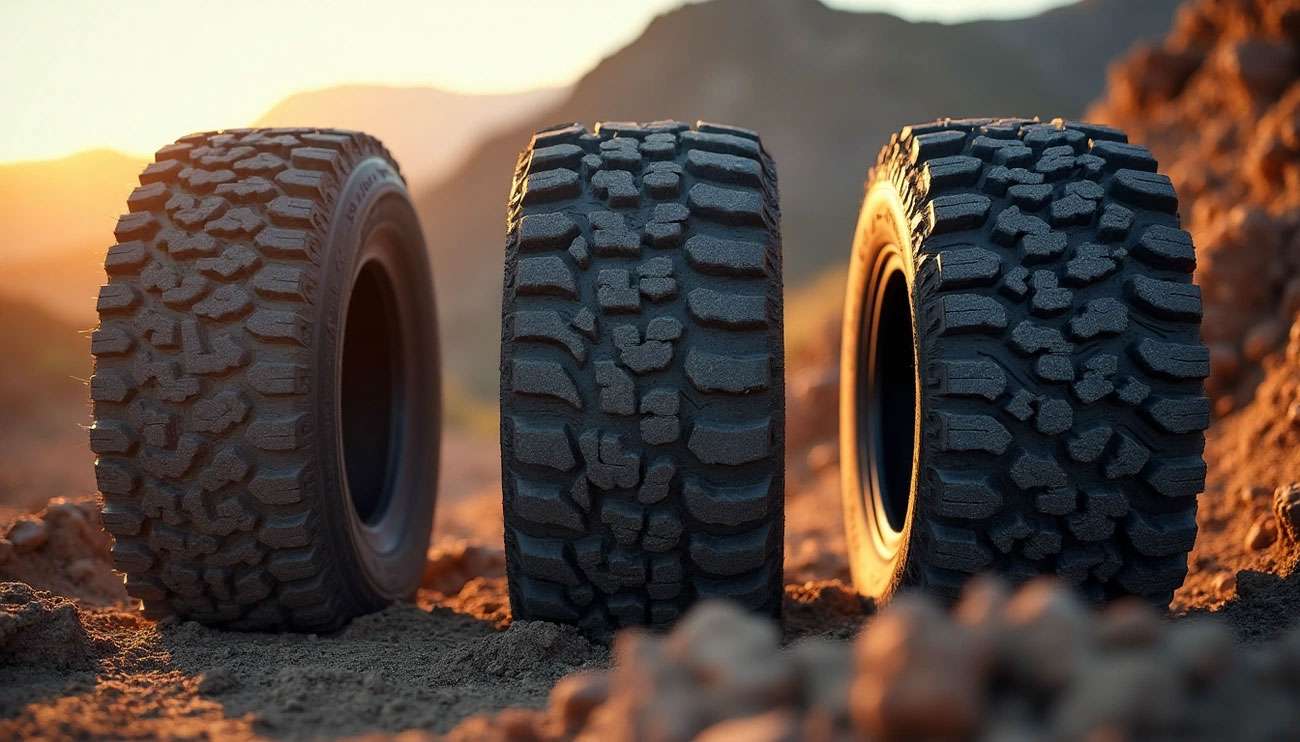
The right set of off road tires can turn a challenging trail into an exciting adventure—or leave you spinning your wheels in frustration. Your tire choice matters whether you're hitting weekend trails or tackling serious off-road challenges, and we're here to help you get it right.
You'll find three main tire categories designed for different terrain needs: All-Terrain (A/T), Mud-Terrain (M/T), and Rugged-Terrain (R/T) [17] [1]. Each type brings specific strengths to the table based on where and how you drive. All-terrain options give you solid performance across various surfaces [17], making them popular for mixed driving. Mud-terrain tires dominate when you need maximum grip on dirt, mud, gravel, and rock [14] [19]. Looking for something that splits the difference? Rugged-terrain tires deliver more aggressive capability than all-terrains with those larger, chunkier tread blocks [19].
This guide breaks down everything you need to know about off-road tires—from understanding how tread design impacts your ride to matching specific tire types with your driving style. You'll walk away with the confidence to pick tires that'll handle whatever terrain you throw at them.
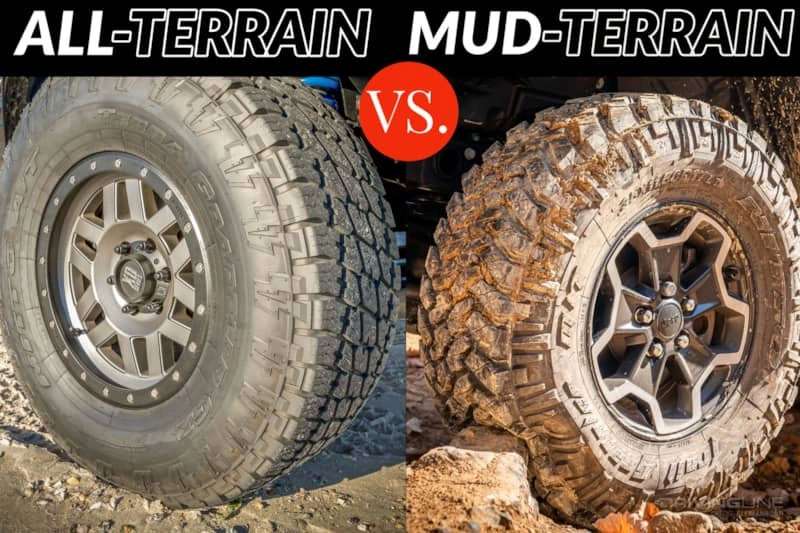
Image Source: Driving Line
Off-road tires are built differently than your everyday highway tires. They feature deep, aggressive tread patterns specifically crafted to grip unpaved surfaces like loose dirt, mud, sand, and gravel. These tires pack deeper and wider grooves that standard highway tires simply don't have [17].
Think of off-road tires as specialized tools for challenging terrain. Most are radial tires with thick, deep treads designed to handle surfaces where regular tires would fail. The exposed edges of the tread actually dig into soft ground, giving you far more traction than smooth tires could provide—much like how cleated athletic shoes grip soft surfaces [17]. This aggressive tread design keeps you moving when highway tires would just spin uselessly.
These tires also come with reinforced sidewalls that resist punctures from rocks, branches, and other trail hazards [2]. Many use softer rubber compounds that grip uneven terrain better, though this means they'll wear faster on regular roads [18].
Tread design makes or breaks an off-road tire's performance. Here's what really matters:
Tread blocks: These raised sections contact the ground directly. Bigger, more spaced-out blocks work great in loose terrain like mud and sand, while tighter patterns grip pavement better [4].
Grooves: The channels between tread blocks push away mud, water, and debris, preventing your tires from losing grip [4].
Void ratio: This measures how much open space exists between tread blocks. More space helps shed mud effectively, while less space means more rubber touches hard surfaces [4].
Aggressive patterns with large blocks and deep grooves excel in muddy and rocky conditions, giving you excellent traction plus self-cleaning ability [19]. But these same features create more road noise and hurt fuel economy on pavement [19].
Most off-road tires fall into two main camps: All-Terrain (A/T) and Mud-Terrain (M/T) [4].
All-Terrain tires are your versatile performers. They deliver balanced performance across different surfaces with moderately aggressive tread patterns. You get good traction on dirt, gravel, and paved roads, making them perfect for drivers who mix city driving with light trail adventures [20].
Mud-Terrain tires are the specialists. They sport larger tread blocks and deeper grooves built specifically for extreme off-road conditions. These tires dominate in mud, rocks, and challenging terrain, but expect more noise and faster wear on paved roads [20].
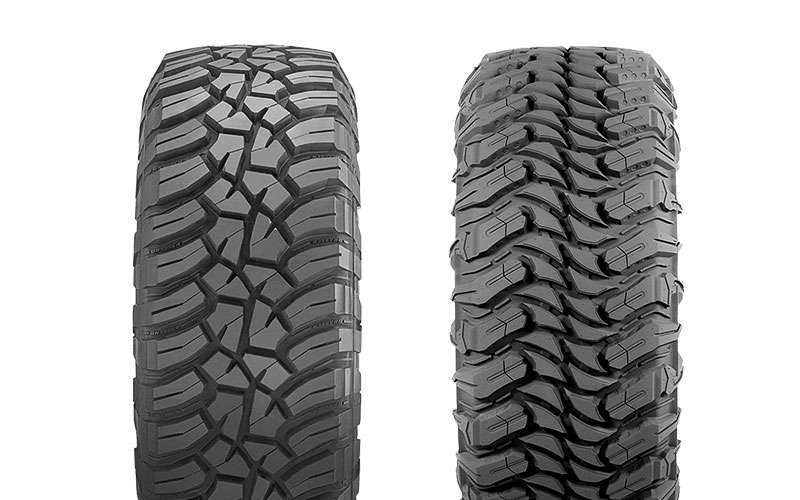
Image Source: Priority Tire
Each off-road tire category serves specific driving needs, and understanding these differences helps you make the right choice for your vehicle and adventures.
All-terrain tires work well when you need dependable performance on both highways and trails. Their moderate tread blocks with tighter spacing give you solid traction in dirt, snow, and light mud while keeping road comfort reasonable [6]. Most A/T options include the M+S (Mud and Snow) rating, and many now feature the Three-Peak Mountain Snowflake (3PMSF) certification for winter conditions [7]. These tires typically come with 50,000-65,000 mile warranties [8] and generate less road noise than their more aggressive counterparts.
Mud-terrain tires shine when conditions get tough. Their aggressive tread features large, chunky blocks with wide gaps that help eject mud and debris as you drive [9] [10]. You'll find reinforced sidewalls that stand up to sharp rocks and trail hazards [11], plus softer rubber compounds that grip better on uneven surfaces [10]. The trade-off? Expect more road noise, no treadwear warranties, and reduced fuel efficiency when driving on pavement [12].
Rugged-terrain tires bridge the gap between A/T and M/T performance, giving you enhanced off-road capability without completely sacrificing road manners [13]. These tires use larger, blockier treads than all-terrains but stay less aggressive than mud-terrains [14]. Many manufacturers back these hybrid options with 40,000-55,000 mile warranties [15], addressing concerns about durability with more aggressive tread designs.
Your choice comes down to where you spend most of your driving time. A/T tires excel at on-road comfort, fuel economy, and longevity, but they'll struggle in deep mud [16]. M/T tires dominate extreme terrain but create more noise and wear faster on pavement [1]. R/T tires offer a middle path—better off-road performance than A/T options while staying more civilized than M/T tires [14]. Match your selection to your actual driving patterns, not just your weekend adventure dreams.
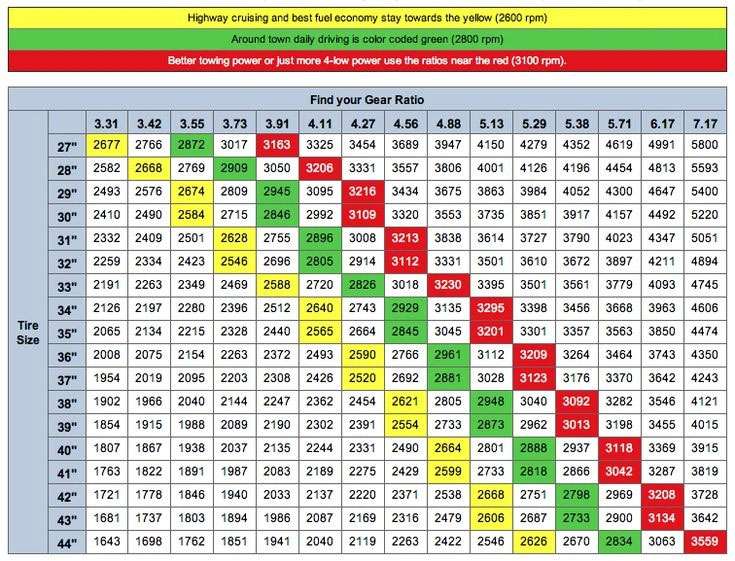
Image Source: Pinterest
Your driving habits tell the whole story when it comes to picking the right off-road tires. Getting this choice right means understanding exactly how you use your vehicle and what matters most to you.
How much time do you actually spend off the beaten path? Be honest here—it makes all the difference. Vehicles that see mostly city streets with the occasional trail adventure work best with all-terrain tires that won't punish you during daily commutes. Experts suggest A/T options work perfectly for that 50/50 split between highway and off-road driving. Mud-terrain tires only make sense if you're spending at least 80% of your time off-road [17]. Want something that bridges the gap? Rugged-terrain tires give you better trail performance without making every trip to the grocery store feel like a punishment.
Where you live shapes your tire needs just as much as where you drive. Dealing with serious snow or brutal cold temperatures? Look for the Three-Peak Mountain Snowflake (3PMSF) certification [18]. This rating actually qualifies your tires for winter traction requirements on mountain passes [19]. M/T tires handle snow surprisingly well thanks to those aggressive treads, but they can struggle on ice since they typically lack siping [20]. A/T tires with 3PMSF certification give you the most flexibility across different seasons.
Your truck or SUV's setup plays a big role in what tires will work best. Larger vehicles benefit from the extra durability that all-terrain or mud-terrain options provide, especially when you're towing or loading up for adventures [18]. Ground clearance needs vary widely—light trail work might only need a 2-inch lift, while serious mud running could require a 6-inch lift plus bigger tires [21]. Keep in mind that tire size changes affect your clearance and might mean suspension modifications down the road.
Off-road tires affect more than just trail performance. Research shows tires can cost you 15-25% in fuel economy at lower speeds and 20-35% on the highway, with off-road tires taking an even bigger bite [22]. Those aggressive tread patterns create rolling resistance that hits your wallet at the pump [23]. Road noise is another reality—bigger tread blocks mean more noise during highway driving. All-terrain tires give daily drivers the best compromise, while specific models like the Continental TerrainContact A/T and Kumho Road Venture AT51 offer better fuel efficiency than typical off-road options [24].
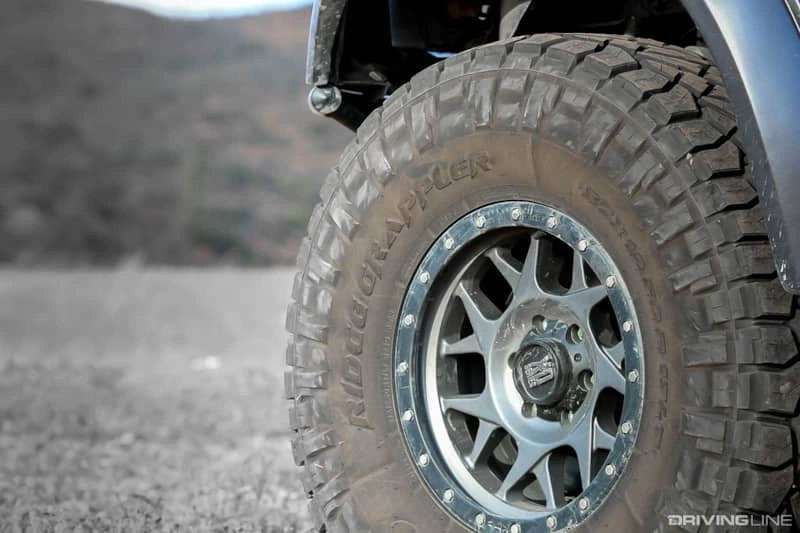
Image Source: Driving Line
Once you've settled on your tire type, knowing the technical details helps you make smart buying decisions and keep your investment performing at its best.
Those numbers and letters on your tire sidewall markings tell you everything you need to know about what you're buying. Take a typical size like LT265/70R17—each part has meaning. "LT" means Light Truck designation, built to handle heavier loads [3]. The "265" shows width in millimeters, while "70" gives you the aspect ratio—that's sidewall height as a percentage of width [25]. "R" indicates radial construction, and "17" tells you the wheel diameter in inches [26].
You'll also want to check the load range, usually C through F for off-road tires. This determines maximum safe air pressure—load range C handles up to 50 PSI, while load range F can take 95 PSI [25]. The DOT code shows when your tire was made; those last four digits show week and year, so "2320" means the 23rd week of 2020 [26].
This question comes up a lot, and there are good arguments on both sides. Some drivers rotate their full-size spare into the mix, spreading wear across all five tires to extend overall life [3].
Others point out that you're still driving the same total miles—just spreading them across five tires instead of four [27]. What matters most is having a good spare and basic repair kit when you need them [28].
Taking care of your tires pays off with better performance and longer life. Keep your air pressure where the manufacturer recommends for normal driving, but don't be afraid to air down for better traction when you hit the trails [5].
Rotation makes a huge difference, especially with how off-road vehicles distribute weight [3]. If you've got a full-size spare, try the "clockwise five-tire rotation" pattern [5]. Don't forget about your suspension either—worn shocks create that "cupping" wear pattern with peaks and valleys across your tread [5].
Time for new rubber when tread depth gets too shallow. Grab a tread depth gage and check—off-road tires need about 6-10mm of tread to do their job [29]. Replace any tire showing sidewall cracks, bulges, or blisters right away since these signal structural problems [29].
Even with good tread, consider replacement after 5-7 years as rubber breaks down over time [29]. Use that DOT code to check manufacturing date [3]. If you're starting to slip in conditions where you used to have solid grip, that's your tires telling you it's time for an upgrade [29].
Finding the right off-road tires comes down to matching your actual driving patterns with tire capabilities. All-terrain tires serve drivers who balance highway commutes with weekend trail runs, while mud-terrain options make sense when you spend most of your time tackling challenging terrain. Rugged-terrain tires fill that sweet spot for folks wanting more off-road bite without giving up too much on-road comfort.
Be honest about how you really drive. Spending 80% of your time on pavement means those aggressive mud terrains will just create noise and hurt your fuel budget. On the flip side, serious trail riders will quickly discover that all-terrain tires can't handle the tough stuff when things get muddy or rocky.
Weather plays a big part in your decision too. Snowy winters call for tires with the Three-Peak Mountain Snowflake certification, no matter which category you pick. Your vehicle's specs, clearance requirements, and typical loads also help narrow down the best options.
Once you've made your purchase, taking care of your tires pays off. Stay on top of pressure checks, stick to rotation schedules, and keep an eye out for damage. Off-road tires cost serious money, but the right set with proper care gives you dependable performance when you need it most.
Here's the thing—there's no single "perfect" off-road tire, but there's definitely a perfect tire for how you drive. With the knowledge from this guide, you can pick tires that'll handle your adventures confidently, whether that means conquering challenging trails or just managing gravel roads without worry.
Understanding the three main off-road tire types—All-Terrain, Mud-Terrain, and Rugged-Terrain—helps you match performance to your specific driving needs and terrain challenges.
• All-Terrain tires offer the best balance for mixed driving (50/50 highway/off-road) with longer warranties and better fuel economy • Mud-Terrain tires excel in extreme conditions but only make sense if you spend 80% of time off-road due to noise and efficiency trade-offs • Choose tires based on your honest driving split—aggressive treads sacrifice on-road comfort for off-road capability • Look for Three-Peak Mountain Snowflake certification for winter driving regardless of tire type selected • Proper maintenance including regular rotation and pressure checks significantly extends tire life and performance
The perfect off-road tire doesn't exist, but the perfect tire for your specific needs does. Success comes from matching tire characteristics to your actual driving patterns rather than aspirational off-road adventures.
The three main types of off-road tires are All-Terrain (A/T), Mud-Terrain (M/T), and Rugged-Terrain (R/T). A/T tires are versatile for mixed use, M/T tires excel in extreme off-road conditions, and R/T tires offer a balance between the two.
Consider your driving habits, including the split between on-road and off-road use, climate conditions, vehicle type, and desired fuel economy. For example, if you spend 90% of time on pavement, all-terrain tires might be the best choice.
Yes, all-terrain tires are designed to provide a balance between on-road comfort and off-road capability. They offer good traction on various surfaces and are suitable for drivers who split their time between highways and light off-road trails.
Off-road tires, especially those with aggressive tread patterns, can reduce fuel efficiency due to increased rolling resistance. The impact can be significant, accounting for 15-35% of fuel economy penalty depending on driving speeds.
Replace your off-road tires when the tread depth becomes too low (generally 6-10mm for off-road tires), if you notice sidewall damage, or after 5-7 years due to rubber compound degradation. Decreased performance on trails is also a sign it's time for new tires.
[1] - https://www.trailsoffroad.com/blog/a-basic-guide-to-offroad-tires
[2] - https://www.falkentire.com/community/the-right-tires-for-off-roading
[3] - https://www.lesschwab.com/article/tires/choosing-the-right-off-road-tires.html
[4] - https://rbptires.com/choosing-the-right-off-road-tires/
[5] - https://www.offroadtraveltv.com/post/choosing-the-right-off-road-tire
[6] - https://en.wikipedia.org/wiki/Off-road_tire
[7] - https://www.radialtireservice.com/types-of-off-road-tires-and-their-uses
[8] - https://www.tires-easy-truck.com/blog/tire-tread-patterns-affect-truck/
[9] - https://rbptires.com/off-road-tire-tread/
[10] - https://furytires.com/how-to-pick-the-right-off-road-tire-for-your-adventures/
[11] - https://atturo.com/articles/navigating-the-world-of-off-road-tires-a-consumers-guide
[12] - https://www.utires.com/articles/what-all-terrain-tires-are-used-for-and-how-they-differ-from-other-tires/
[13] - https://www.motortrend.com/features/best-on-off-road-all-terrain-tires-tire-rack-owner-reviews
[14] - https://simpletire.com/categories/mud-terrain-tires
[15] - https://www.autoblog.com/features/all-terrain-vs-mud-terrain-tires
[16] - https://www.tireagent.com/blog/top-5-tire-brands-off-roading
[17] - https://simpletire.com/learn/compare/all-terrain-vs-rugged-terrain-vs-mud-terrain-tires
[18] - https://www.tireagent.com/blog/rugged-terrain-hybrid-tires
[19] - https://www.roughcountry.com/blog/tire-talk-all-terrain-vs-mud-terrain-vs-rugged-terrain-tires
[20] - https://www.4wheelparts.com/articles/all-terrain-vs-mud-terrain-vs-rt-tires
[21] - https://www.mccluskeychevrolet.com/blog/what-to-know-when-its-time-to-buy-off-road-tires/
[22] - https://www.tireryder.com/blog-detail/all-season-vs-all-terrain-tires-choosing-the-right-one
[23] - https://www.lesschwab.com/article/tires/all-terrain-vs-all-weather-tires.html
[24] - https://www.tacomaworld.com/threads/how-to-choose-an-off-road-tire.307541/
[25] - https://www.ironman4x4.com/blogs/posts/the-importance-of-ground-clearance-and-off-roading
[26] - https://rbptires.com/off-road-tires-and-fuel-efficiency/
[27] - https://www.offroadxtreme.com/tech/do-off-road-tires-affect-open-road-fuel-efficiency/
[28] - https://www.tireagent.com/blog/the-truth-will-all-terrain-tires-kill-your-gas-mileage
[29] - https://tirecraft.com/off-road-truck-tire-maintenance-guide-venture-further-with-tirecraft/